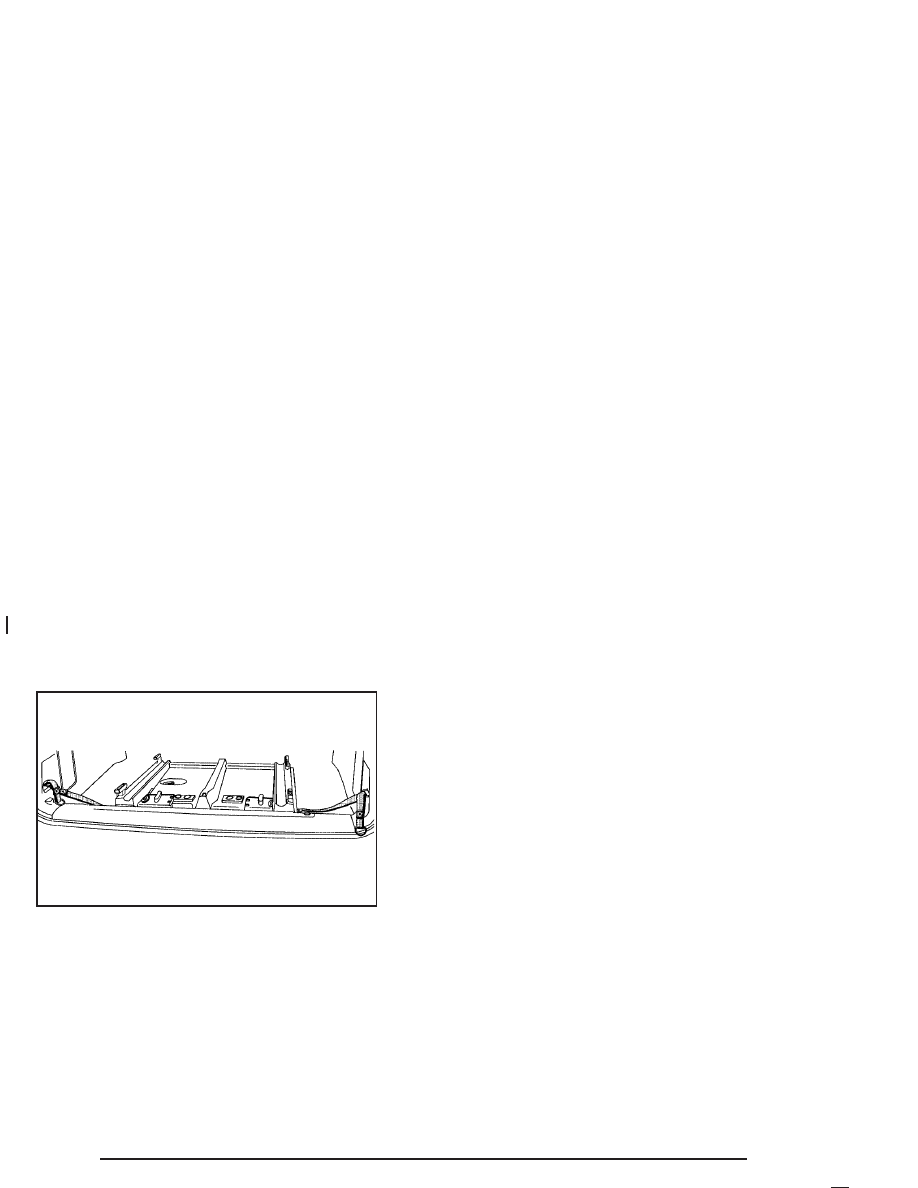Pontiac Aztek (2005 year). Instruction - part 8

3. Feed the tethered ring upward through the lower
sidewall loop on each side of the vehicle.
Make sure that the tethered ring is placed on the
outer edge of the tailgate, on each side of the
vehicle, for later attachment to the tray.
4. Push and pull on the floor track assembly to make
sure it is locked into place.
Replacing the Sliding Rear
Convenience Tray
The floor track assembly must be installed first for the
sliding rear convenience tray to stay locked into
place. See “Replacing the Floor Track Assembly” listed
previously for more information.
1. Pick up the tray by the handle and support the tray
from the bottom with your other hand.
2. Place the tray onto the floor track assembly. Make
sure that the two front axles are placed over the
hooks on the rear of the floor track assembly. There
are four axles on the bottom of the tray, two in
front and two in back.
Make sure the rollers on the bottom of the tray are
located in the tracks of the floor track assembly.
2-46